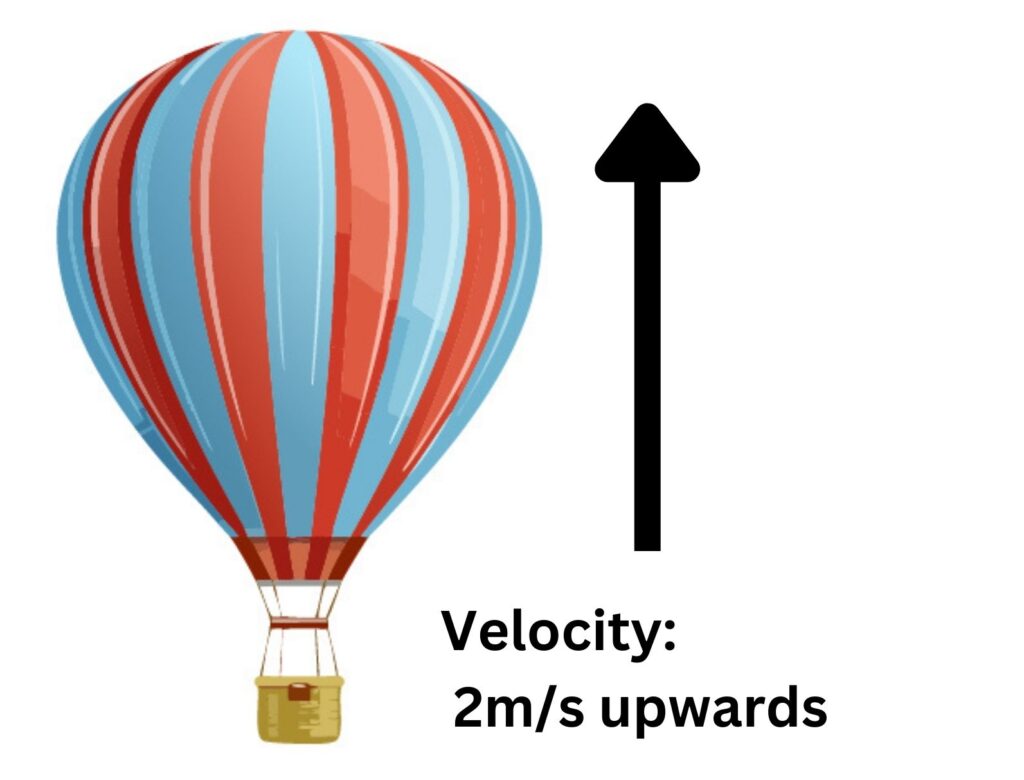AQA GCSE Velocity(physics)
Velocity
Velocity is the speed of an object in a given direction.
Velocity is a vector quantity, so it has both a magnitude and a direction.

In this case the hot air balloon has an upward velocity of 2m/s. The speed of the balloon would be 2m/s, no need for a direction because speed is a scalar quantity.
| Scalar quantity | Vector quantity |
|---|---|
| Speed | Velocity |
| Distance | Displacement |
Revision of Key terms
| Key term | Definition |
|---|---|
| Distance | How far an object travels or moves |
| Displacement | How far an object travels or moves in a certain direction |
| Speed | Speed is the distance (metres) an object travels in one second |
| Velocity | Velocity is the speed in a given direction |
Objects travelling in a circular path.
If an object travels in a circular path and it may have a uniform (constant) speed. However, it will not have a constant velocity. The velocity will be changing.

This is because to maintain the circular path, the direction has to constantly change, so therefore the velocity will be changing.
In the example above for the car to maintain the circular path around the roundabout it needs to constantly move towards the right and forward at the same time. So, although it can move around the roundabout at a constant speed, its velocity will constantly change due to its direction changing.
Practice Questions
1.State the definition of velocity
2. Describe how speed and velocity are different.
3. Marie is on a big wheel fairground ride travelling at 4m/s. Explain why she can have a constant speed of 4m/s, but her velocity would be constantly changing.
Absorption and Emission of EM Radiation
JJ Thomson and Plum pudding model
Ernest Rutherford and the Nuclear Model
Niels Bohr changing the Nuclear Model
Discovering the Proton and Neutron
Measuring radiation from radioactivity
Radiation types and properties
Random nature of radioactive decay
Radioactive contamination or irradiation
Hazards of contamination and irradiation
Studies on the effects of radiation on humans
Different half lives of radioactive isotopes
Nuclear Fission Chain Reaction
Writing nuclear fission equations
Drawing ray diagrams for a concave lens
Drawing Ray Diagram to produce a virtual image for a convex lens
Drawing ray diagram to produce a real image for a convex lens.
Specular and Diffuse Reflection
Seeing Coloured Objects Part 2
Viewing objects through coloured filters
Transparent, Translucent and Opaque